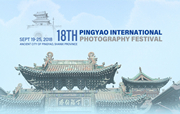2017 Pingyao International Photography Festival
Pingyao, UNESCO World Cultural Heritage Site
Updated: 2017-10-12( chinadaily.com.cn)


Located in central Shanxi province, the Ancient City of Pingyao, or Pingyao county is a famous culture town with 2,700 years of history.
As the most complete county representing the Ming (1368-1644) and Qing (1644-1911) dynasties, the whole city was named a UNESCO World Cultural Heritage Site, in December 1997, including its city walls, yamun, downtown streets, dwellings and temples.
It serves as a helpful resource for the analysis of the development of Chinese politics, economy, culture, art and religion.
Pingyao was built up based on the cultural thoughts and architectural style of the Han nationality of China. To this day, the city walls and buildings have maintained their 14th-18th century style.
The Ancient City of Pingyao was first built in the Western Zhou Dynasty (c.11th century–782 BC). Over 2,700 years, the stone walls were kept intact during the dynastic transition. Six heavily fortified barbicans and a moat made the wall a perfect defense system during ancient wars.
The shops lining South Street are heritages of the Ming and Qing dynasties. After the 16th century, Pingyao became a local commercial center, reaching its peak in the mid-late 19th century. At that time, the city was the control center of China's modern financial industry.
Keeping the typical pattern of Ming and Qing dynasties, Pingyao Ancient City has four main streets, eight side streets and 72 lanes. The gorgeous wooden three-story houses stand in the center of city, while two-story stores gather along the streets. It is also an archetype of an Chinese ancient city. The Kuixing building stands in the city's southeast and adjacent to Dacheng Hall in the Confucian Temple.

Pingyao Wantuo
Wantuo, a type of noodle from the Qing Dynasty (1644-1911), is one of Pingyao's local snacks with a long history.


